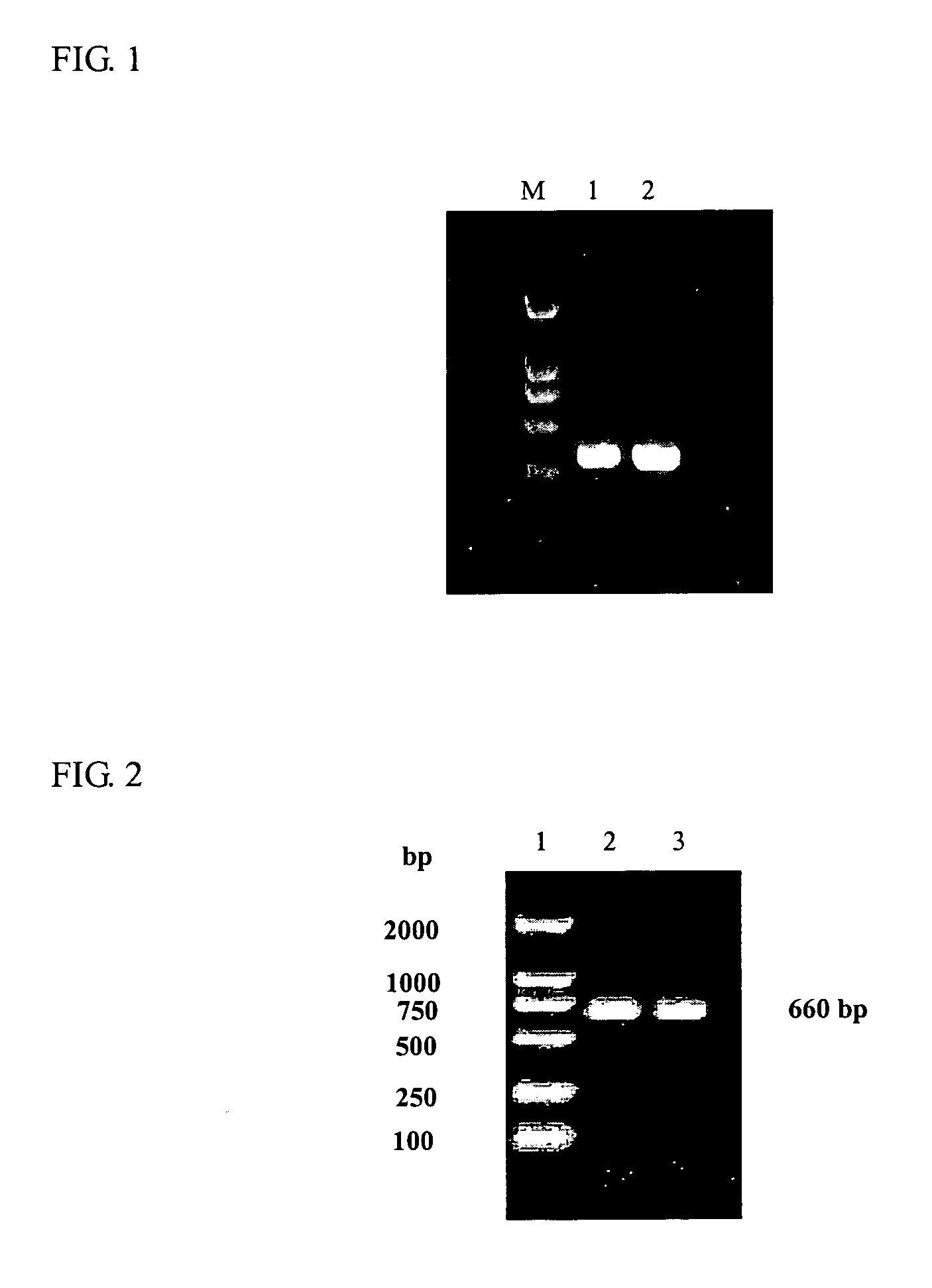Anti-human hepatoma monoclonal antibody hav18 light/heavy chain available region gene, and use thereof
a monoclonal antibody and heavy chain technology, applied in the field of anti-human hepatoma monoclonal antibody hab18 heavy/light chain variable region genes and the use thereof, can solve the problems of difficult to generate anti-hepatoma antibodies with high affinity and specificity by these methods, and achieve the effect of high activity
- Summary
- Abstract
- Description
- Claims
- Application Information
AI Technical Summary
Benefits of technology
Problems solved by technology
Method used
Image
Examples
example 1
Cloning of the Genes Encoding the Variable Regions of Heavy / Light Chain of Anti-Human Hepatoma McAb HAb18
[0038] The cell line used was a murine hybridoma cell line obtained by using a conventional cell fusion technique by the Cell Engineering Researching Center of the Fourth Military Medical University (FMMU) (Zhinan Chen, Yanfang Liu, Jizheng Yang et al. McAb communication. 1989; 2:33-36). The antibody produced by the cell line was a murine anti-human hepatoma McAb HAb18, which was an IgG, with high affinity and specificity to its target molecule HAb18G.
[0039] Cells (5×106) in exponential growth phase were used to prepare total RNA. Typically, total RNA extraction was carried out using an SV Total RNA Isolation System according to the protocol provided by the manufacturer (Promega, USA). The quality and quantity of the sample were determined by ultraviolet spectroscopy and 1% denaturing polyacrylamide gel electrophoresis. A first strand cDNA corresponding to the variable region o...
example 2
Cloning and Expression of the Gene Encoding Fab of Anti-Human Hepatoma McAb HAb18
[0049] The relative molecular weight of Fab is about 50,000. The Fab fragment has good penetration and pharmacokinetics properties and has been widely used in the diagnosis and therapy of many diseases. In this example, the gene encoding the Fab fragment of McAb HAb18 was cloned and expressed in E. coli.
1. Materials and Methods
1.1 Materials
[0050] A murine hybridoma cell line producing a murine anti-human hepatoma McAb HAb18 (IgG1) was obtained by using a conventional cell fusion technique (Zhinan Chen, Yanfang Liu, Jizheng Yang et al. McAb communications. 1989; 2:33-36). Trizol reagent (Gibco BRL) and a Reverse Transcription kit (Promega, USA) were used. Expression vector pComb3 and E. coli competent cell JM109 and XL1-blue were commercially obtained. T vector, PCR reagents, restriction endonucleases and ligase were purchased from Takara (Dalian, China). McAb HAb18 and HRP-HAb18 were made by the i...
example 3
Construction of a Universal Expression Vector for a Chimeric Human / mouse Fab Antibody and Expression of the Chimeric Fab Antibody Against Human Hepatoma Associated Antigen HAb18G
[0060] HAb18 McAb is a murine monoclonal antibody with high specificity and affinity for human hepatoma associated antigen HAb18G / CD147. A murine antibody can elicit human anti-mouse antibody (HAMA) reaction to different extents in the body of patients. This reaction will weaken the therapeutic efficacy of the antibody, produce toxicity and damage the organs for elimination. In addition, owing to its poor penetrating ability, the clearance of a large antibody molecule in blood and non-tumor tissues is relatively slower, leading to the lower T / NT ratio, which limits the further application of said antibody. In order to overcome these defects, it is necessary to develop a new type of genetically engineered antibody with low immunogenicity and high T / NT ratio. The relative molecular weight (Mr) of chimeric Fab...
PUM
| Property | Measurement | Unit |
|---|---|---|
| volume | aaaaa | aaaaa |
| volume | aaaaa | aaaaa |
| volume | aaaaa | aaaaa |
Abstract
Description
Claims
Application Information
 Login to View More
Login to View More - R&D
- Intellectual Property
- Life Sciences
- Materials
- Tech Scout
- Unparalleled Data Quality
- Higher Quality Content
- 60% Fewer Hallucinations
Browse by: Latest US Patents, China's latest patents, Technical Efficacy Thesaurus, Application Domain, Technology Topic, Popular Technical Reports.
© 2025 PatSnap. All rights reserved.Legal|Privacy policy|Modern Slavery Act Transparency Statement|Sitemap|About US| Contact US: help@patsnap.com



